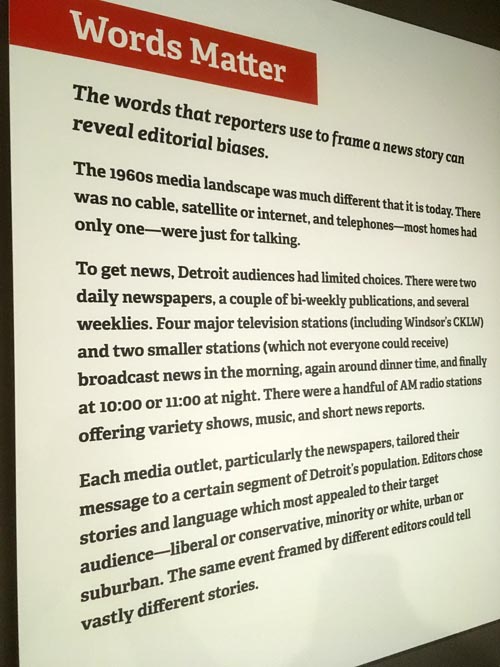 |
| Panel from the Detroit Historical Museum's exhibit, Detroit 67: Perspectives. July 8, 2017. |
One of the elements I appreciated in the current Detroit Historical Museum exhibit on the civil unrest in Detroit in 1967 was its analysis of the media coverage. One panel lists what elements that we might expect today were missing.
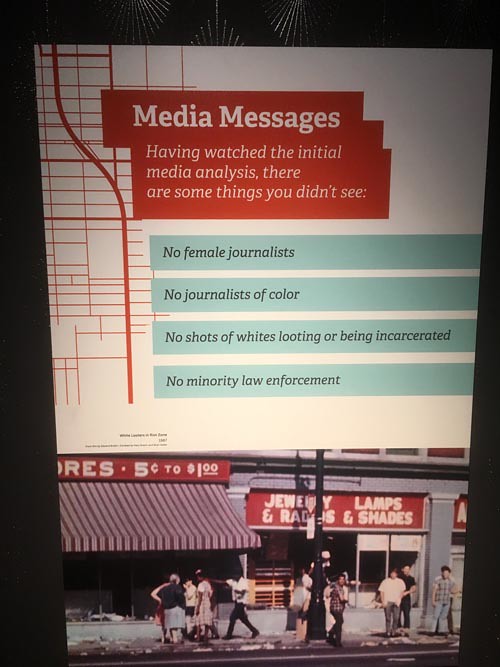 |
| Panel from the Detroit Historical Museum's exhibit, Detroit 67: Perspectives. July 8, 2017. |
For television coverage, a space
designed to evoke a middle class living room displayed footage on screens resembling vintage sets. As you'll see from the articles included in this post, the Canadian coverage followed a similar playbook.
As the disturbance grew the morning of July 23, authorities urged the media to avoid or downplay reports, in order to maintain calm. It quickly became impossible to hide what was going on. CKLW-TV (now CBET) provided the first local TV report around 2 p.m. Soon, reporters from outside the region began descending on the region.
The
Windsor Star initially ordered its employees to stay out of Detroit, threatening to dismiss anyone who did. According to Herb Colling's book
Turning Points, the paper's executive editor was "concerned about the safety of his staff and about insurance coverage and liability, especially if someone is injured or killed." Reporters grew demoralized as peers from London and Toronto headed across the border. The paper's bureaus in Chatham and Sarnia went ahead and sent staff across, but they had to send their reports to other papers.
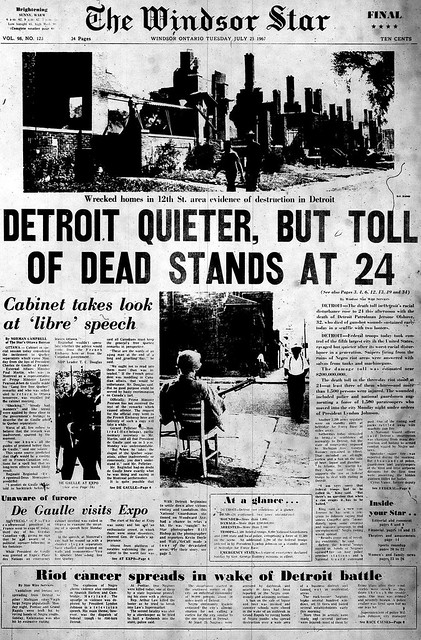 |
| Front page, Windsor Star, July 25, 1967. Click on image for larger version.. |
By the morning of July 25, the
Windsor Star reversed its decision and allowed its staff to cross the river. Among the first were first were Walter McCall and Kevin Doyle, who opened their eyewitness account with the following description:
The city many Windsorites regard as an extension
of their own was struggling to return to normal this morning. But Detroit will
somehow never be the same. Commuters, most of whom had not seen Detroit since they left
their jobs Friday, were confronted with grim and often shocking sights as they
slowly filtered back to work today. Khaki-clad militiamen, their rifles slung
over their shoulders, looked strangely out of place patrolling back and forth
in front of Hudson’s. Convoys of Michigan State Police cruisers, bristling with
automatic weapons, threaded their way around barricades blocking the entrances
to side streets.
Over the course of the day, revised front pages
updated the body count. Reports updated the situation at the border, where restrictions were gradually eased. Tunnel bus service resume and commuters were allowed to cross, but those curious to see the riot for themselves continued to be turned back.
One article outlined the effects on Windsor's nightlife. Clubs which depended on American audiences, such as the Elmwood Casino, Metropole, and Top Hat, cancelled their shows. Downtown bars reported healthy business from those who came down to watch what was unfolding across the river.
The editorial page chimed in with its thoughts:
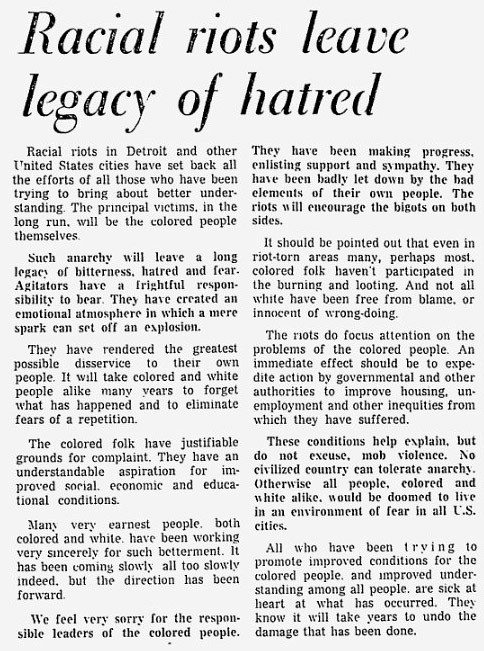 |
| Windsor Star, July 25, 1967. |
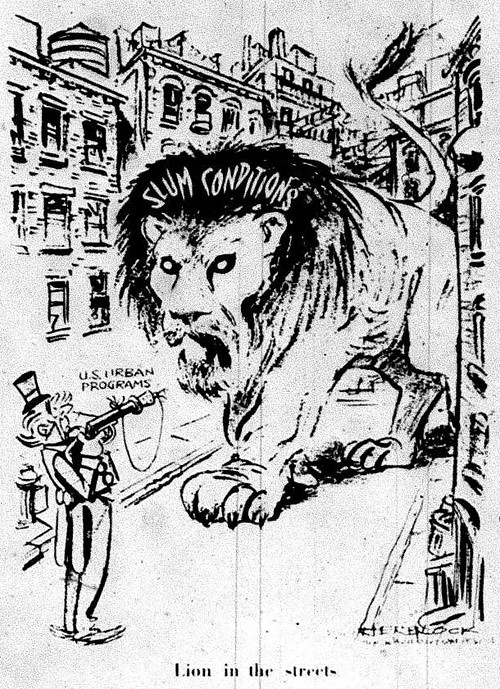 |
| Cartoon by syndicated political cartoonist Herblock, Windsor Star, July 25, 1967. |
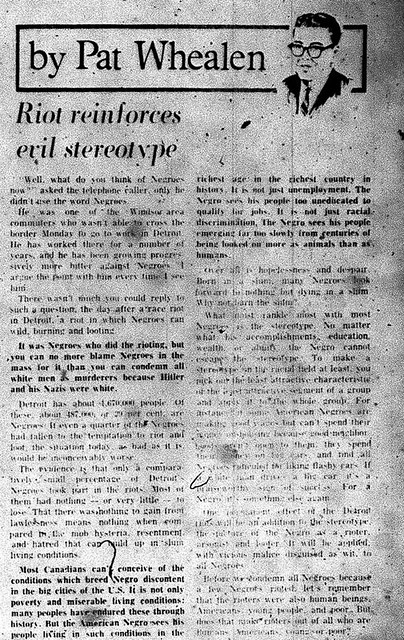 |
| Windsor Star, July 25, 1967. |
W.L. Clark's column touches on a growing fear in Windsor: that the upcoming annual Emancipation Day celebration might provoke racial unrest.
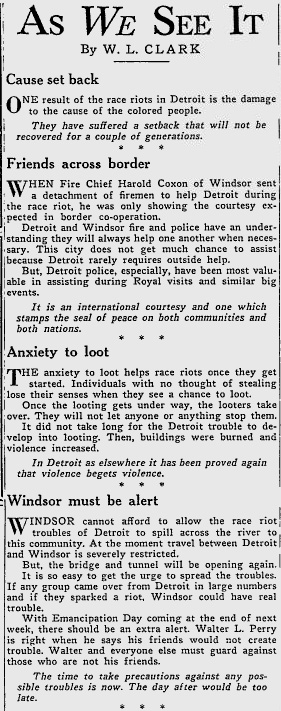 |
| Windsor Star, July 25, 1967. |
Emancipation Day, which I'll discuss in more detail in an upcoming post, is a longstanding tradition celebrating the abolition of slavery. As the following story notes, it became a touchy topic for those prone to participating in call-in radio shows.
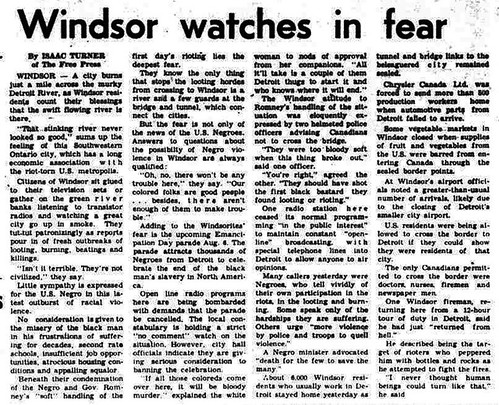 |
| London Free Press, July 25, 1967. |
Papers seized upon the statements of radicals and hotheads, with varying degrees of shock value. They also played up the atmosphere being carnival-like in some spots.
 |
| London Free Press, July 25, 1967. Click on image for larger version. |
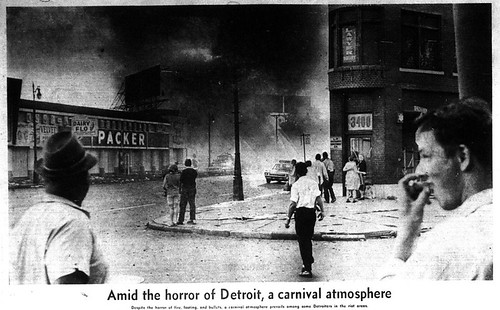 |
| London Free Press, July 25, 1967. Click on image for larger version. |
 |
| London Free Press, July 25, 1967. |
We move on to coverage from Toronto...
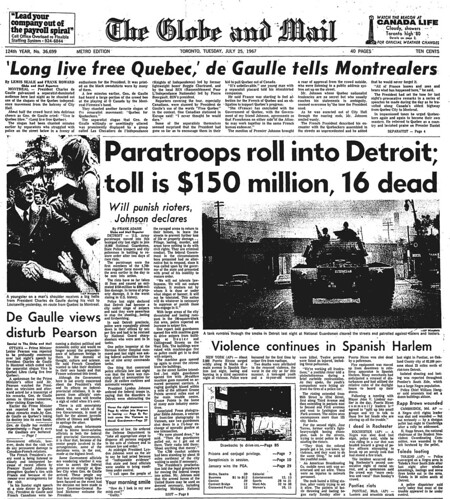 |
| Globe and Mail, July 25, 1967. Click on image for larger version. |
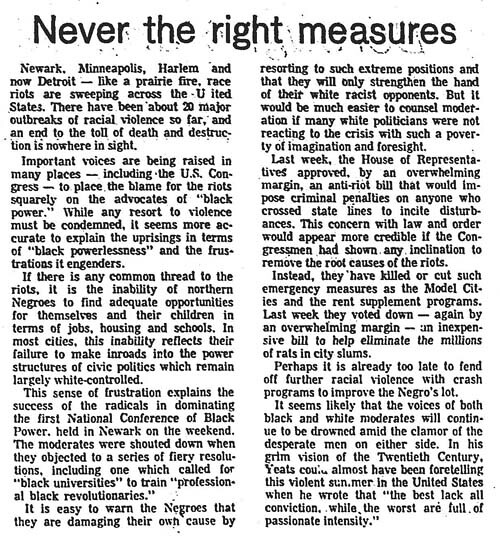 |
| Globe and Mail, July 25, 1967. |
Canadian papers noted how
looting was a multiracial effort, though while reading some reports I had the sinking feeling that's a familiar strain: blacks who engage in such activity are dangerous, while whites are just having a good time. The
Globe and Mail went with an AP report.
 |
| Globe and Mail, July 25, 1967. Click on image for larger version. |
Here's the
Toronto Star's front page, featuring a view from syndicated American columnist
Jimmy Breslin:
The paper sent two of its reporters, including future longtime
Toronto Sun columnist Gary Dunford, to be their "Star man on the scene."
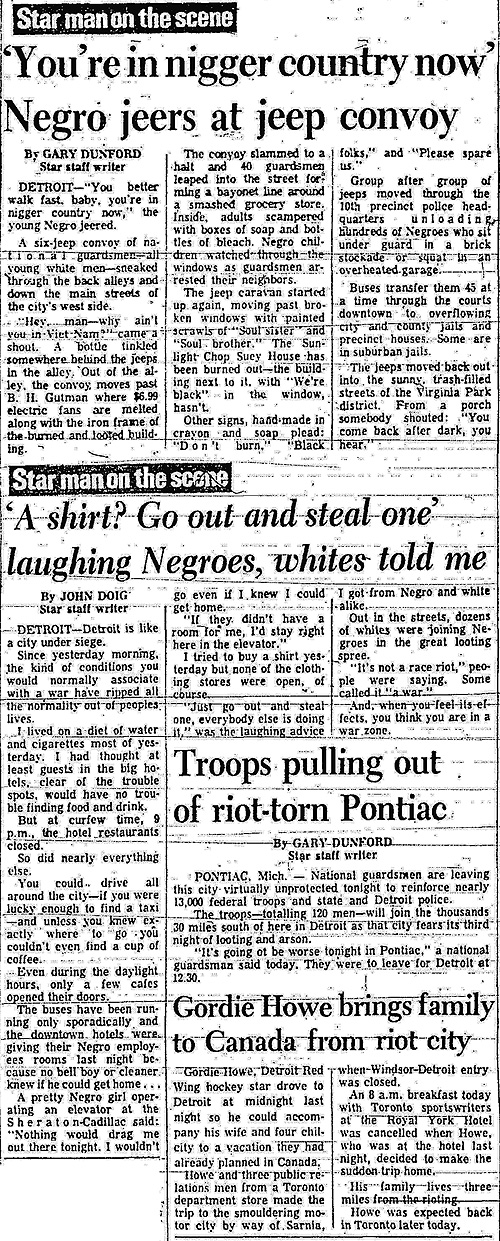 |
| Toronto Star, July 25, 1967. |
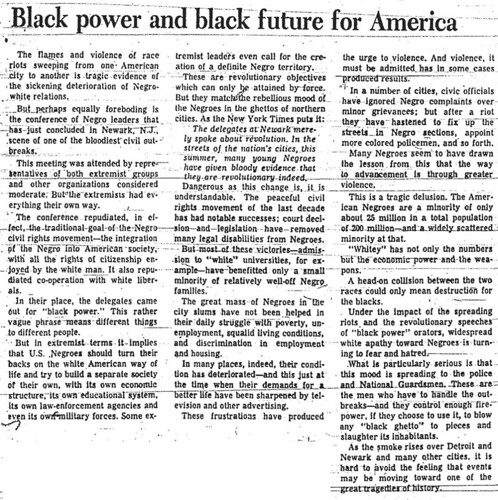 |
| Toronto Star, July 25, 1967. |
A pair of pieces contrasted Detroit and Windsor:
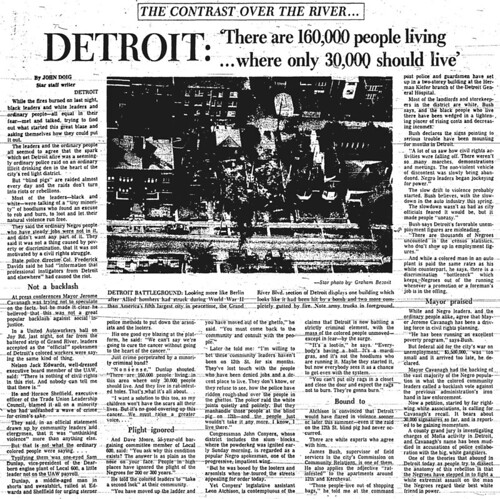 |
| Toronto Star, July 25, 1967. Click on image for larger version. |
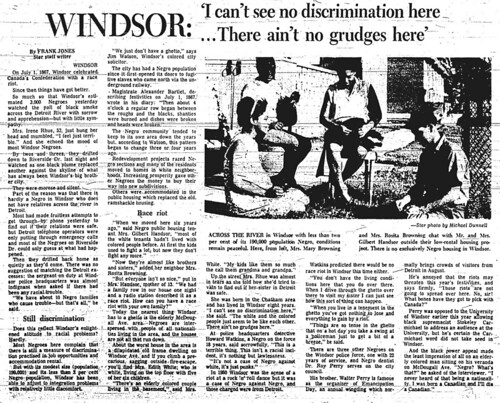 |
| Toronto Star, July 25, 1967. Click on image for larger version. |
The
Telegram sent reporter Robert MacBain into Detroit. His key quote on the front page: "
Seventeen cases of foaming detergent couldn’t
have made me feel any whiter than I did yesterday in the heart of the
burned-out and looted west side.”
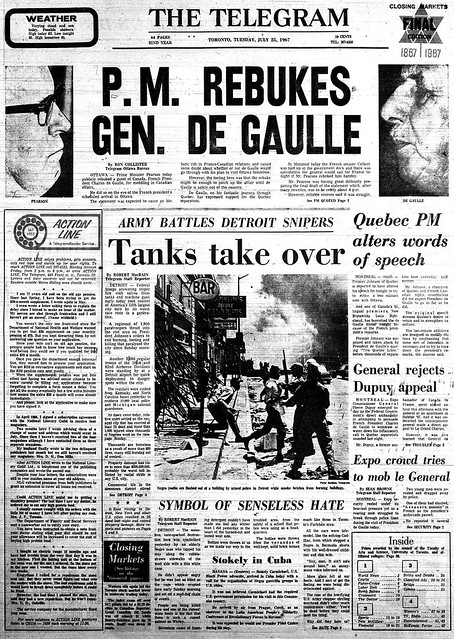 |
| Front page, the Telegram, July 25, 1967. Click on image for larger version. |
Here's the rest of MacBain's report:
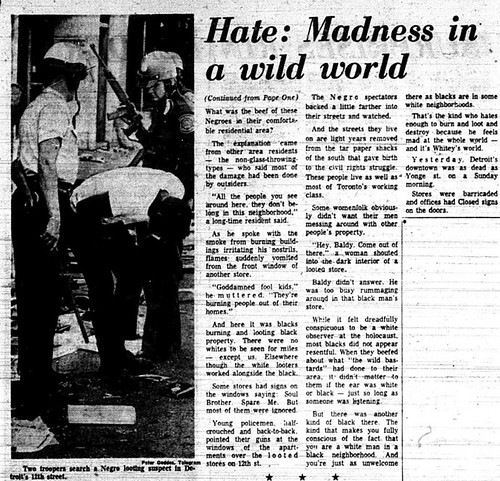 |
| The Telegram, July 25, 1967. Click on image for larger version. |
The Telegram's editorial:
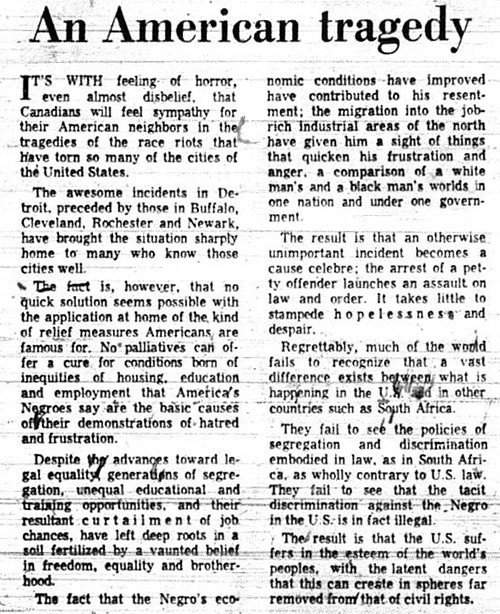 |
| The Telegram, July 25, 1967. |
Filling in for Telegram TV critic Bob Blackburn, Kathy Brooks criticized CBC's Newsmagazine program for spending more time covering the fallout from Charles deGaulle's visit to Quebec. "Discussions about news judgement rarely get anyone anywhere," Brooks wrote, "but this time, in the long run, a rising death toll in a race riot seems more important than what kind of flag was flying on President de Gaulle's ship."





















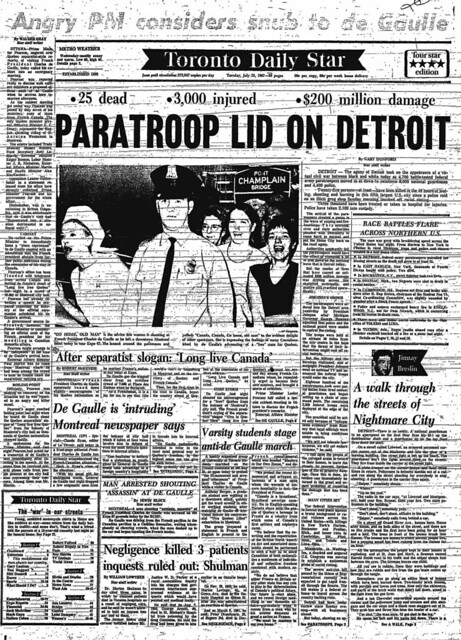

Comments